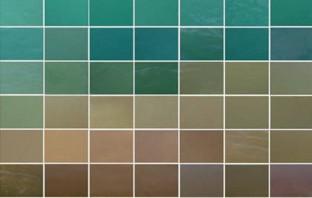从太空研究海洋生物学
IF 7.1
2区 地球科学
Q1 GEOCHEMISTRY & GEOPHYSICS
引用次数: 1
摘要
空间可见光谱辐射测量,通常被称为海洋颜色测量,提供了关于海洋生物群以及生物和生态系统过程的丰富信息流。海洋色彩技术用于观察海洋生物的优势在于其全球覆盖范围,并能够在与过程本身的尺度相匹配的各种空间和时间尺度上对该领域进行采样。另一个优势在于,海洋色衍生产品的时间序列越来越长,如果存在的话,可以对任何长期变化进行调查。本文综述了海洋色彩数据的原理和应用。浮游植物是存在于海洋阳光照射层中的单细胞、自由漂浮的植物,它是浮游植物中主要的色素。叶绿素-a的浓度是第一个,也是最常见的,从海洋颜色数据中得出的生物变量。多年来,海洋颜色产品的清单已经发展到涵盖海洋生态系统及其功能的许多指标,包括初级生产、物候和生态系统结构。利用这些数据的应用多种多样,包括基于生态系统的渔业管理、海洋生物地球化学循环、生态系统健康和气候变化。需要一种综合方法,将其他海洋观测模式和模式与卫星观测结合起来,以调查海洋生态系统的奥秘。本文章由计算机程序翻译,如有差异,请以英文原文为准。

Ocean Biology Studied from Space
Abstract Visible spectral radiometric measurements from space, commonly referred to as ocean-colour measurements, provide a rich stream of information on ocean biota as well as on biological and ecosystem processes. The strength of the ocean-colour technology for observing marine life lies in its global reach, combined with its ability to sample the field at a variety of spatial and temporal scales that match the scales of the processes themselves. Another advantage lies in the growing length of the time series of ocean-colour-derived products, enabiling investigations into any long-term changes, if present. This paper presents an overview of the principles and applications of ocean-colour data. The concentration of chlorophyll-a, the major pigment present in phytoplankton–single-celled, free-floating plants that are present in the sunlit layers of the ocean–was the first, and remains the most common, biological variable derived from ocean-colour data. Over the years, the list of ocean-colour products have grown to encompass many measures of the marine ecosystem and its functions, including primary production, phenology and ecosystem structure. Applications that exploit the data are many and varied, and include ecosystem-based fisheries management, biogeochemical cycles in the ocean, ecosystem health and climate change. An integrated approach, incorporating other modes of ocean observations and models with satellite observations, is needed to investigate the mysteries of the marine ecosystem.
求助全文
通过发布文献求助,成功后即可免费获取论文全文。
去求助
来源期刊

Surveys in Geophysics
地学-地球化学与地球物理
CiteScore
10.00
自引率
10.90%
发文量
64
审稿时长
4.5 months
期刊介绍:
Surveys in Geophysics publishes refereed review articles on the physical, chemical and biological processes occurring within the Earth, on its surface, in its atmosphere and in the near-Earth space environment, including relations with other bodies in the solar system. Observations, their interpretation, theory and modelling are covered in papers dealing with any of the Earth and space sciences.
 求助内容:
求助内容: 应助结果提醒方式:
应助结果提醒方式:


